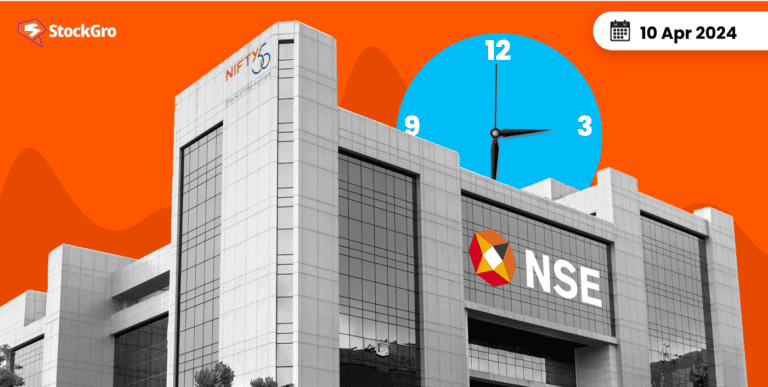Table of contents
If you are an option trader, you may want to profit from changes in stock prices without actually buying the securities. For this, option strategies come in handy. These are quite similar to tools in a trader’s toolkit, which helps them manage their risks and boost their revenues. By skillfully selecting various options contracts, traders can create positions that will benefit them when market conditions vary.
In this article, we shall delve into vertical spreads and synthetic option spreads, explaining how they operate and why they are important for successful options trading.
What is vertical option spread?
The vertical spread is an option trading strategy that involves buying and selling two options simultaneously, and they have the same kind (puts or calls) but different strike prices. The options, however, must possess the same expiration while one position is long while another is short.
The main purpose of a vertical spread option strategy is to mitigate the risk of incurring a loss while at the same time capturing the time value premium of options.
There are two main types of vertical spreads:
- Bullish Vertical Spreads: A bullish vertical spread is when an investor purchases a lower strike option and sells a higher strike option. This is utilized by traders who anticipate an increase in the value of the underlying security but would also want to restrict their initial expenditure as well as probable losses.
- Bearish Vertical Spreads: Conversely, a bearish vertical spread involves buying a put option with a higher strike price and simultaneously selling a put option with a lower strike price. This creates a vertical put debit spread, where the investor pays a net premium. The premium received from selling the lower strike put helps offset the cost of buying the higher strike put, limiting potential losses and defining maximum profit potential.
Vertical spreads are limited in terms of both risk and reward because the amount between the strike prices fixes the maximum profit and loss. They are favoured by many traders who wish to make gains as a result of moves towards specific directions on the underlying asset while at the same time keeping their risk low through predetermined levels.
What is a synthetic option spread?
A Synthetic Option Spread is a trading strategy that replicates the risk-reward profile of a traditional option spread using a combination of different option contracts. It’s like creating a synthetic version of a particular spread by using alternative options.
For instance, the synthetic put option strategy involves combining a long call option with a short stock position. This combination effectively mimics the payoff of owning a put option, providing downside protection if the stock price decreases.
Conversely, the synthetic call option involves a combination of a long stock position and a short put option. This setup replicates the profit potential of owning a call option, allowing traders to benefit from upward price movements in the underlying asset.
The synthetic call option formula is S+P =C, where:
- S represents the long position in the underlying asset,
- P represents the long position in an at-the-money put option, and
- C represents the synthetic call option
Synthetic option strategy can be useful in situations where liquidity or specific option contracts are limited, allowing traders to create similar positions using alternative instruments. They offer flexibility and customization while achieving trading objectives similar to those of traditional spreads.
Comparing vertical spreads and synthetic option spreads
Here is the comparison between vertical spreads and synthetic option spreads:
| Aspect | Vertical Spreads | Synthetic Option Spreads |
| Definition | Spread strategy involving options with different strike prices but the same expiration date. | Strategy using a combination of options and/or underlying assets to replicate the risk-reward profile of traditional spreads. |
| Risk Management | Limited risk due to defined maximum loss. | Risk can be managed through position sizing and selection of underlying assets/options. |
| Profit Potential | Limited profit potential, typically capped at the difference between strike prices. | Potential for unlimited profit or loss, depending on the combination of options/underlying assets used. |
| Breakeven Points | Clearly defined breakeven points based on the strike prices of the options involved. | Breakeven points may vary depending on the specific combination of options used. |
| Flexibility | Limited flexibility as the strategy is based on predetermined strike prices. | Offers greater flexibility as traders can customize positions to match specific market expectations. |
| Complexity | Relatively straightforward strategy suitable for beginners. | Requires very deep understanding of options pricing and market dynamics. |
| Liquidity | May suffer from liquidity issues, especially with less popular options contracts. | Liquidity can vary depending on the underlying assets and options chosen for replication. |
| Cost | Lower initial cost compared to synthetic option spreads. | Typically, it involves higher initial costs due to the purchase of multiple options and/or underlying assets. |
| Market Direction Sensitivity | Sensitivity to market direction is determined by the choice of bullish or bearish spread. | Sensitivity can be adjusted by modifying the combination of options/underlying assets to match market expectations. |
| Suitable for | Suitable for investors seeking defined risk and limited profit potential. | Suitable for more experienced traders willing to take on complex strategies for potentially higher returns. |
So, basically, the choice between vertical and synthetic spreads depends on your market expectations, risk tolerance, and trading strategy.
Vertical spreads are typically used for direction-based strategies, while synthetic spreads offer more flexibility and can be customized to meet unique market expectations.
Conclusion
It’s essential to grasp options trading strategies like vertical spreads and synthetic option spreads. They help you handle risks and boost gains in the stock market. Understanding these tactics lets you tailor your investments to different market situations and reach your financial objectives. If you’re eager to learn more about options trading, check out StockGro.
FAQs
Vertical spreads work by combining options with different strike prices to create a spread position. This position limits both the potential profit and loss, with the difference between the strike prices determining the spread’s maximum gain.
Vertical spreads offer limited risk and defined profit potential. They can be used to capitalize on market movements while protecting against large losses.
Synthetic option spreads are positions created using a combination of options and/or the underlying asset to replicate the risk-reward profile of traditional spreads. They offer flexibility and can be tailored to specific market outlooks.
Synthetic option spreads differ from vertical spreads in that they may involve different types of options or combinations of options and the underlying asset. They allow traders to achieve similar risk-reward profiles through alternative strategies.
The choice between vertical spreads and synthetic option spreads depends on factors such as market conditions, risk tolerance, and trading objectives. Vertical spreads may be preferred for simplicity, while synthetic option spreads offer more flexibility in strategy design.

